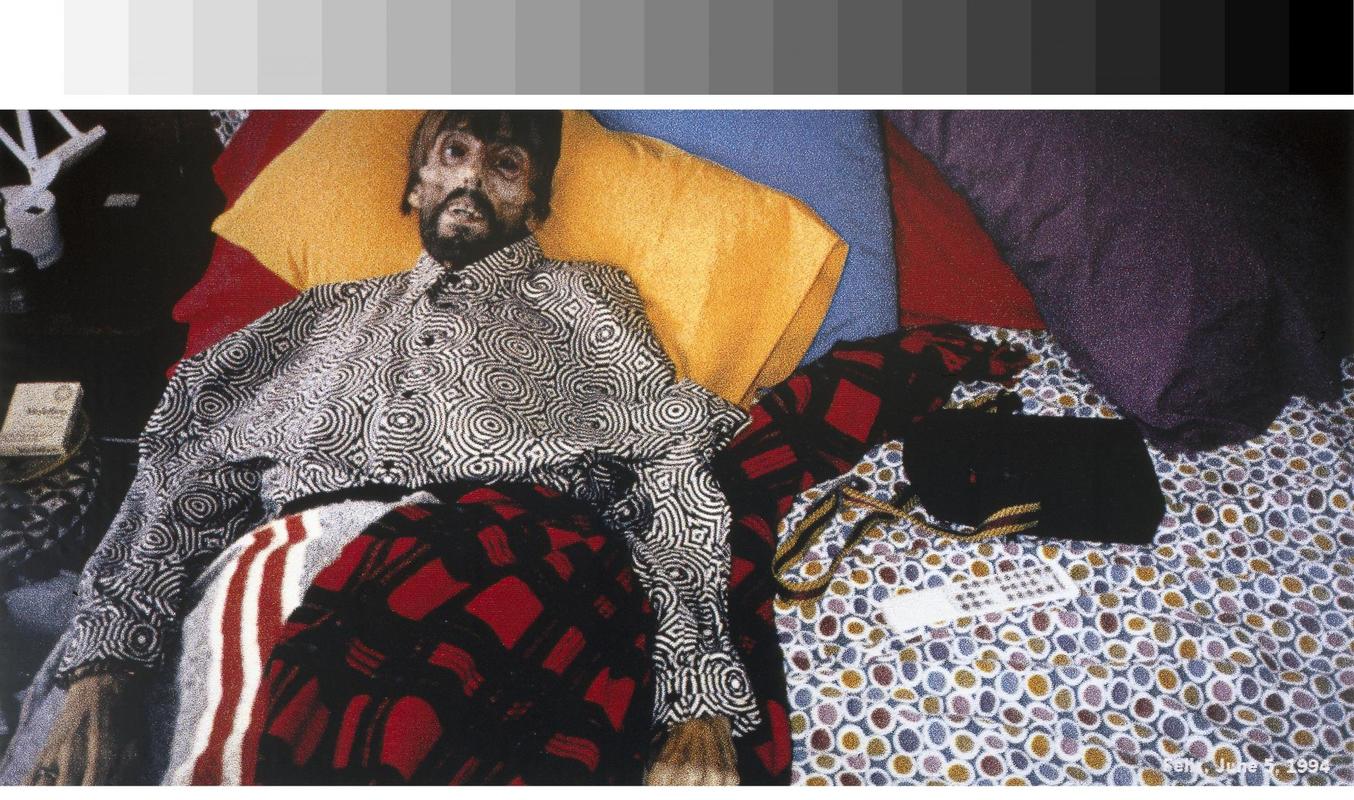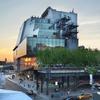More about Felix Partz, June 5, 1994

Contributor
This is perhaps the most intense and heart-breaking photograph ever taken.
You can’t look at it without feeling the intense misery experienced during the AIDS epidemic. Artists have raised awareness about the AIDS crisis before. General Idea, the collective consisting of Jorge Zontal, AA Bronson and Felix Partz (the man in this photograph) focused on it when both Jorge and Felix tested positive for HIV. Another artist, Felix Gonzalez-Torres created installations consisting of piles of individually-wrapped candies that viewers could take, pointing to how easily wrappers, like disease, can spread across a city. David Wojnarowicz too used his experiences with AIDS to fuel his work. But none of them captured the pain of it like AA Bronson did after the death of his collaborative partner Felix Partz, only months after the death of their third, Jorge Zontal. This just hits you in the face when you see it and then hits you over and over again every time you remember it.
The photograph was taken 3 hours after the death of Felix Partz, formerly known as Private Partz. AA Bronson describes the scene: “He [Felix] is arranged to receive visitors, and his favorite objects are gathered about him; his television remote control, his tape-recorder, and his cigarettes. Felix suffered from extreme wasting, and at the time of his death his eyes could not be closed: there was not enough flesh left on the bone." And the hits just keep on coming…
Bronson couldn’t make any art for five years after the deaths of his friends, but eventually sold this photograph to the National Gallery of Canada. Then in 2010, they lent it to the National Portrait Gallery for their exhibition, “Hide/Seek,” which (finally) brought to light the works of influential LGBTQ artists who were previously unknown. But Republicans in Congress and the Catholic League got their panties in a monumental bunch when they saw the video piece by David Wojnarowicz, A Fire In My Belly, which had a short clip of ants crawling over a crucifix.
The issue got so heated that, “Rep. [Eric] Cantor claims that the [National Portrait Gallery’s] scheduling of this exhibition during the holiday season was a pointed attempt to offend Christians.” Some interesting logic there, Eric. But the National Portrait Gallery caved and edited out that part of the vid...to which AA Bronson responded negatively (shocker). He requested that Felix Partz June 5, 1994 be removed from the exhibition altogether because it made him “an unwilling ‘accessory to censorship’ and that his work has been ‘altered’ by being presented in a compromised context.” The photograph was not removed but the exhibition’s goal of addressing the censorship of the LGBTQ community in art was pretty much ruined. And just like that we are back in the 1980’s.
Sources
- “Felix, June 5, 1994. AA Bronson 5 June 1994, Printed 1999.” April 2, 2011. Accessed February 17, 2017. https://www.gallery.ca/en/see/collections/artwork.php?mkey=96808.
- Chayka, Kyle. “Smithsonian Caves to GOP Pressure, Removes Ant-Covered Jesus Video.” December 1, 2010. Accessed February 17, 2017.
- Adams, James. “Canadian Artist Brings Lawyer into Fight with National Portrait Gallery.” Accessed February 17, 2017.
- Green, Tyler. “Q&A with AA Bronson on ‘hide/seek,’ ‘Felix.’” January 2004. Accessed February 17, 2017.
- “SINGULAR VISIONS: AA BRONSON, FELIX PARTZ, JUNE 5, 1994, 1994 AND 1999.” Accessed February 17, 2017. http://whitney.org/WatchAndListen?play_id=389.
- Cotter, Holland. “‘Hide/seek’ Exhibit at National Portrait Gallery - Review.” Art & Design (The New York Times), December 10, 2010.











